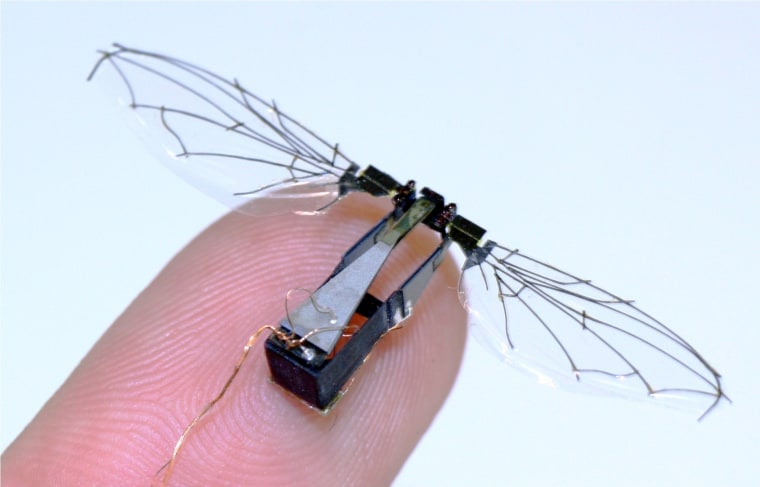Airplane passengers tangled up in sluggish security lines this holiday weekend might wish they could take to the air themselves. Unfortunately, we've yet to evolve self-propelled flight, but scientists and engineers are busy taking lessons from nature to improve our barely century-old flight technology.
Take geckos, for example. Scientists at the University of California at Berkeley led by Ardian Jusufi have figured out how the lizards employ their tails to turn and right themselves as they fall from trees, helping them to always land on their feet. They even built a robotic model gecko that does the same trick. Check out this video of the falling gecko:
The work with robo-geckos "suggests that inertial appendages could simplify control of a variety of robots and unmanned aerial vehicles, because this solution allows for simple body reorientation," reads the opening editorial in a special issue of the journal Bioinspiration and Biomimetics, devoted to flight technologies inspired by Mother Nature's fliers.
The journal also features research from the University of Maryland, showing that micro helicopters could be much simpler if they imitated the falling maple seed’s wing pitch for controlled hovering and forward flight.
Virginia Tech biologist Jake Socha reports on how the slithering of flying snakes allows them to glide from tree to tree – research that could one day lead to small and agile flying vehicles.

The challenges of building insect-sized robots with flapping wings similar to those on flies are explored by Harvard researchers Benjamin Finio and Robert Wood. While more work remains to be done, such robotic insects could one day serve as spies -– in effect, serving as the proverbial "fly on the wall."
The special edition also covers hovering hummingbirds, birds' intuitive exploitation of thermal updrafts, and seagulls' sense of flight environment, which allows them incredible angles of attack and increased control in crosswinds.
"Because biologists and engineers are typically trained quite differently, there is a gap between the understanding of natural flight of biologists and the engineer's expertise in designing vehicles that function well. In the middle, however, is a few pioneering engineers who are able to bridge both fields," David Lentink from Wageningen University and Andrew Biewener from Harvard University write in their editorial.
One of the best things about this special issue is that all the articles are freely accessible, which makes it easier to let your imagination take flight.
More on nature-inspired technology:
- Space escape craft airbags designed like seed sacs
- Future robots will run like cockroaches
- Why bats are more efficient fliers than birds
- Flight of the robo-butterfly
- Spy plane maneuvers like a bird
John Roach is a contributing writer for msnbc.com. Connect with the Cosmic Log community by hitting the "like" button on the Cosmic Log Facebook page or following msnbc.com's science editor, Alan Boyle, on Twitter (@b0yle).
